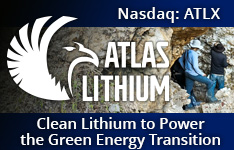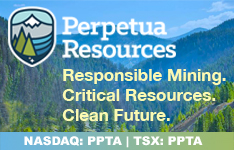We'll start our recap of The Life Sciences Report's inaugural year with the comments of Geoff Meacham, senior analyst and managing director at JPMorgan Chase.
Hepatitis C
In his Jan. 31 interview (Hepatitis C and Orphan Diseases Driving Big Biotech Potential), Meacham said this about the outlook for hepatitis C (HCV) and orphan diseases:
"We've been talking about [HCV] for about two years, and it is still going to be a tremendous source of interest and innovation, no doubt about it. I think what's attracted a lot of people is that you can derisk a hepatitis C asset relatively early. A phase 2 study with a few hundred patients, or maybe even fewer than 100, can inform the design and likely the outcome of a larger phase 3 study."
Meacham also noted significant merger and acquisition activity in the sector and the development of "the so-called nuc (nucleotide or nucleoside analog) class space." This nuc space is really hot right now. Hepatitis C is a sweet spot."
In an interview on Nov. 29, John Tucker of Sagient Research recapped developments in the HCV field over the year (Lessons from the Liver Meeting: Companies that Could Reignite the Hepatitis C Industry):
"Currently HCV is treated with a 6– to 12-month regimen of interferon, ribavirin and a protease inhibitor. . .The presence of interferon in these regimens is a problem because it must be injected and because it has severe side effects. At the European Association for the Study of the Liver (EASL) meeting in April, we saw the first detailed presentations of highly efficacious interferon-free treatment regimens. This was a watershed moment.
"Since then there have been refinements in the treatments, and at AASLD we saw a lot more detail on what is possible—especially with regard to the competitive profiles of regimens in development by different companies."
Tucker also discussed the future of the HCV market, noting that there is concern among industry experts that "the patients being enrolled in most ongoing clinical trials are not representative of the patients that doctors see in their practices." These include patients "who are HIV-coinfected" and those who "are prior treatment failures."
Addressing the question of whether the HCV market will be lucrative for investors given the patient population, Tucker noted, "It is like the obesity market. Just because you have the disease doesn't necessarily mean you're ever going to be treated. There are substantial numbers of people out there who are uninsured. And since it takes so long for cirrhosis or liver cancer to develop, many will die of other causes before their HCV becomes an issue." Because of these uncertainties, Tucker maintained that there wouldn't be an answer "until we have the drugs out there."
Orphan Diseases
On the orphan disease front, JPMorgan's Goeff Meacham predicted that companies with treatments for rare diseases such as hereditary angioedema, paroxysmal nocturnal hemoglobulinuria, atypical hemolytic uremic syndrome, hypophosphatasia and idiopathic pulmonary fibrosis could prove robust for investors.
Senior research analyst Kimberly Lee of ThinkEquity, who specializes in the orphan disease sector, explained how she approaches the space in a Sept. 9 interview (ThinkEquity Analyst Bets on Extraordinary Science and Clinical Data): "We believe regulatory enthusiasm through new initiatives has encouraged development of innovative drugs for rare diseases. Development of orphan drugs has been overlooked by big pharma and investors because they believed the return on the investment needed for drug development was low given small target populations. Prior to legislation, there were only 10 orphan drugs that had been approved because there were no economic or other incentives for drug companies to help recoup the costs of research and development expenses." That changed when the Orphan Drug Act was instituted in 1983.
Lee continued, "The act confers several advantages. First is orphan drug designation; second, there are federal tax credits that amount to about 50% of expenses incurred during clinical testing. In addition, there are provisions for seven-year marketing exclusivity in the U.S. and 10-year marketing exclusivity in Europe; there are research grants of approximately $4M per year for clinical research; drug application user fees are waived; and the act provides for accelerated approvals. . .Not only do these incentives encourage big pharma participation, they also help support small startups."
Since the institution of the Orphan Drug Act, Lee noted there have been more than 3,300 orphan drug applications and more than 360 orphan drug approvals.
"Biotech companies realize that orphan drug development is a viable business model in a space where approximately 95% of rare diseases have no approved therapies. As patent cliffs for blockbuster drugs draw nearer, prompting the need to invigorate pipeline growth, we believe big pharma is turning its attention to the orphan market. We believe the orphan category is here to stay," Lee said.
Oncology
The oncology sector was productive in 2012. In his Oct. 25 interview (Out of the Red and into the Black: John McCamant on Investment in Blood Cancer Companies), the Medical Technology Stock Newsletter editor commented on opportunities and developments in blood cancer treatments.
"Heme/onc has been an area of success for biotech companies," McCamant said. "It is easier to measure tumor loads in heme/onc than in the solid tumors, where you have to evaluate response rates—excepting survival rates, of course—with imaging techniques. The clinical trial endpoints are clear, and that makes the sector a good place for investors. The other factor is that the size of heme/onc markets don't always reflect the potential impact the drugs can have in a broader market. A lot of drugs approved in this space will work in other types of hematological cancers and other types of disease. The initial markets shouldn't be thought of as too small because the drugs could open up much larger market opportunities down the road."
Even though McCamant characterized himself as a "non-scientist," he noted that "most biotech investors can understand how cancer drugs work in hematological cancers versus solid tumors. It is really simple. Heme/onc disease is more susceptible to drugs because it doesn't amass itself into a solid tumor, where you literally have to debulk and get at multiple layers. Heme/onc disease is circulating in the blood. If we get drugs into the bloodstream, they have a chance to get at almost all of the cancer cells, whether we use a targeted biologic drug or a chemotherapy. Fundamentally, I think that is why we have had more success with heme/onc than with solid tumors."
Alex Daley of Casey Research also addressed oncology treatments that are revolutionizing the industry in his Oct. 11 interview (Casey Analyst Forecasts Explosive Biotech Growth).
"There is no limit to what small-molecule drugs—the traditional chemical-industry born pharmaceuticals we are accustomed to—can do," Daley said. "But they are just the tip of the iceberg. We are walking pools of organic substances—amino acids, proteins, lipids, cholesterol etc.—with their large and complex molecules. And that is the next major phase of medicinal development—tapping into our biological systems to cure and prevent disease.
"In the first phase of what promises to be a sea change in medicine, we are taking advantage of our bodies' natural systems to aid in the delivery of small-molecule drugs," Daley continued. "Our immune systems are incredibly powerful, and have many tools to keep inorganic substances out of our bodies. By wrapping these molecules in proteins or lipids that are familiar to our bodies, we can oftentimes deliver drugs more effectively. Following that is the introduction of targeted proteins to mimic natural functions. . .Then genetic medicine follows from that, in which we interfere with the processes of genetics to turn off (or 'silence') misbehaving genes, or to turn on dormant ones."
Commenting on targeted chemotherapies, Daley said, "There are two very specific breakthroughs here of interest. The first is the recently approved use of antibody-drug conjugates, [some of which] are created by bonding traditional chemo with antibodies selected from our own bodies that target very specific cancer cells. Chemotherapy, which is known as the 'poison' in the oncological lingua franca 'slash, burn and poison,' does precisely that to the entire body, causing horrific side effects in many patients. By piggybacking on the body's own mechanism for targeted immune response, chemotherapy can be rendered basically inert except when it comes in contact with cancer cells."
The second therapy incorporates "a liposome-wrapped chemo that will advance the treatment of large solid tumors in much the same way. It is a much simpler mechanism of action. [The therapy] wraps current market-leading chemos, like Doxorubicin, inside a fat molecule, rendering them much less potent in the bloodstream. Once the chemo is distributed throughout the system, a radio-frequency device is aimed at the area of the tumor, cracking open the delivery vehicles and causing the chemo to attack that local area. It is like combining the best aspects of radiation (targeting) with the best aspects of chemo (effectiveness)."
Daley also commented on whether RNA interference (RNAi) antisense treatments, which target on-off switches in genes, will become a therapeutic trailblazer.
"Make no mistake: RNAi, or temporary gene silencing through interference with the messenger RNA that signal cell behavior, looks to be one of the most important genetic treatment methodologies yet conceived," Daley said. "Highly targeted genetic treatments may hold keys to silencing the growth factors that make cancer run rampant and uncontrolled, or may control the buildup of the brain plaques [with] links to Alzheimer's disease. They even show promise in being able to silence some of the designed obsolescence symptoms we refer to as aging—a condition fully rooted in our genetics."
In addition, Daley voiced his thoughts on the prospects for pathway inhibitors. "Pathway inhibitors promise to interrupt the signaling pathways that cancer uses to tell itself to grow, effectively stunting the spread of malignancies. Cellular biologists and oncologists have been studying these mechanisms for decades and have discovered some that are particularly unique to cancer."
Daley noted that "pathway inhibitors are a perfect example of the continued relevance of small molecules in the biological world. These traditional drugs took a very biotech path to market, but are nonetheless more similar to the drugs of yore in mechanism of action than they are to complex genetic and protein therapies.
The Unexpected
A number of analysts identified companies that were either developing innovative treatments or were repurposing existing drugs to address unmet needs. A nutraceutical product that has been pharmaceuticalized was mentioned by several analysts over the course of 2012. Despite a tragic accident suffered by the krill oil company that Chen Lin (Chen Lin's Key to Huge Biotech Profits: Make It Personal), Hugh Cleland (Think Long Term and Win Big with Small Biotechs) and Elemer Piros (Do You Have the Guts to Take On Cutting-Edge Biotech Like This VC?) identified as up and coming, the analysts hailed the benefits of krill oil, for both patients and investors, as potentially significant.
Chen Lin was very enthusiastic about the therapy. "The idea [behind krill oil] involves a new spectacular medicine that can control cholesterol," he said. "I became interested at the beginning of this year and studied it for a few months before I plunged into it. Triglycerides are the main target of the research. If you look at fish oil results side by side with results for krill oil, krill oil is as effective—if not more effective—than four times the dose of the fish oil-based competitor. It can reduce triglycerides, reduce LDL and increase high-density lipoprotein (HDL). No other drug can do that."
Elemer Piros noted: "There was an experiment comparing regular fish oil with [krill oil]. In all parameters, [krill oil] was far superior to ordinary fish oil. . .Krill oil appears to have additional ingredients, including phospholipids and an antioxidant. These are all naturally occurring; [the manufacturer] doesn't add anything to the product. It simply purifies the good stuff from the krill, which appears to make it superior to ordinary fish oil."
In terms of the market, Lin noted that, "another aspect people should take a closer look at is the Chinese market. People in China are big on fish oil; the country has an enormous fish oil market. But, according to my sources, few people there have heard of krill oil. I feel the product has huge, huge potential because when people in China realize krill oil is far better than fish oil, they'll be buying it hand over fist. If this happens, we could see a real shortage of krill oil. I probably should buy some krill oil and put it into storage beforehand."
The Year Ahead
We interviewed George Zavoico, senior analyst and managing director with MLV & Co., twice during 2012. In his Sept. 13 interview (Seven Innovative Biotechs That Could Soar by Year-End), Zavoico expressed continued optimism about biotech prospects through the remainder of the year, noting that an observation he'd made earlier in the year about biotechs having "a breeze to their backs" was still applicable. "From a fundamental standpoint, in terms of science and clinical trial milestones, [the] biotech market has long and strong legs from here. Quite a few companies are projecting announcement of top-line results of proof-of-concept or phase 3 trials before year-end, either by press release and/or at clinical conferences. The summer is relatively quiet with regard to clinical conferences, so the fact that valuations of many companies held up or increased during the past two or three months is a good sign. . ."
With a number of companies expected to release key clinical trial data prior to the end of the year, Zavoico added: "With important milestones like these, which could add substantial value with positive results, you can see that the breeze, as you say, is continuing to back the biotech sector."
Will the breeze at biotech's back continue to bolster the life sciences sector in 2013? Whichever way the wind blows, The Life Sciences Report will track the developments. We also look forward to interacting with our readership in the New Year. Please feel free to comment, ask questions or request coverage of a specific life sciences sector using the comment box at the bottom of every article we publish. We'd love to hear from you.
We'd also like to thank you for your readership over the last year, and look forward to providing you with timely and informative interviews with sector experts through 2013 and beyond.
Want to read more Life Sciences Report interviews? Sign up for our free e-newsletter, and you'll learn when new articles have been published. To see a list of recent interviews with industry analysts and commentators, visit our Streetwise Interviews page.
DISCLOSURE:
From time to time, Streetwise Reports LLC and its directors, officers, employees or members of their families, as well as persons interviewed for articles on the site, may have a long or short position in securities mentioned and may make purchases and/or sales of those securities in the open market or otherwise.

 What is the value of innovation? Of addressing unmet needs? Of new and "disruptive" technologies? Those are just a few of the issues that industry experts tackled in interviews with
What is the value of innovation? Of addressing unmet needs? Of new and "disruptive" technologies? Those are just a few of the issues that industry experts tackled in interviews with 









































